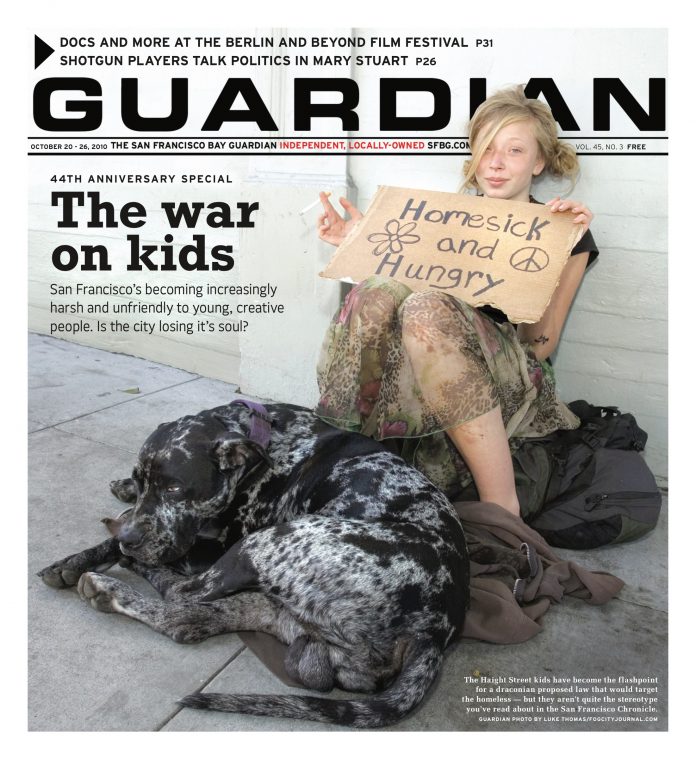arts@sfbg.com
LIT/VISUAL ART At a time when everyone is bemoaning the death of the book from either Kindle or just plain old lack of interest, I stand up for our old friend and former conveyance. There’s something about it — the smell of fresh ink, the feel of the yellowed-pages of a well-worn paperback, that gentle “crack” of the spine of a new volume — that can never be replaced by some black-matte gadget. As a writer and lover of all things book, I’ve been impressed by a few this year that may reignite your love for what’s laying between the covers, just waiting for your return.
Julian Bell’s Mirror of the World: A New History of Art (Thames and Hudson, 496 pages, $34.95) is an unassuming tome. Clocking in at just under 500 pages, this softcover textbook-looking marvel has become a mainstay on my research shelf and bathroom magazine rack. Gathering full-color plates of some of the most lush (Delacroix’s Death of Sarandapulus), confrontational (Donatello’s David), and demanding (Jane Alexander’s Vissershok) images in Western art over the last 500 years, Bell has managed to do what so often seems like the impossible in the art world: he’s included damn near everybody. To Bell, Nok terracotta, Chinese Master Guo Xi, and Dogon carvings have as much influence on contemporary art as Warhol, Pollack, and Manet. “I want to believe,” he says in the introduction, “that works of art can reveal realities that had otherwise lain unseen, that they can act as frames for truth.” Mirror to the World does just that, framing a more-true, inclusive history of art while providing a nifty little timeline in the back to play catch-up.
Speaking of timelines, I’m grateful that Simone Werle’s 50 Fashion Designers You Should Know (Prestel, 160 pages, $19.95) has one! As a latecomer to the world of fashion, I know what I like, but sometimes have no idea why, or where it came from. The designers profiled in this book are given full- color spreads featuring their most signature pieces. Armani, Prada, and Dolce and Gabbana are explored at length, while conceptualists such as Yohji Yamamoto and Rei Kubokawa are not overlooked. From early-20th century designers like Coco Chanel and Andre Courreges to contemporaries such as Vivienne Westwood and Tom Ford, this guidebook is handy and dandy.
One of the most beautiful books I’ve gotten my hands on this year is also one of the most challenging and provocative. Martin Eder’s Der Blasse Tanz/The Pale Dance (Prestel, 320 pages, $64.95) is a formidably luscious soft-focus bomb waiting to go off in the reader’s psyche. The German painter walks the thin line between fantasy and reality, nightmare and saccharine dream, child-like infatuation and barely-legal obsession. With a technical prowess to rival Renoir and Botticelli, Eder uses watercolors to draw us into this uncomfortable in-between, turning us into admirers and voyeurs at the same time. From the plush feel of the slightly weathered cover-stock, to Isabel Azoulay’s introduction and its insights regarding feminism and erotic art, everything works together, making Der Blasse Tanz an artifact that tells our oh-so modern story in a way that only a well-made book can.
But if there is any book out there right now that truly justifies why art and photo books still exist, it’s got to be Phyllis Galembo’s Maske (Chris Boot, 208 pages, $46). I love this book! In it, ordinary people turn into mythic figures and magicians, tricksters, and gods through fantastic costumes in African and Caribbean rituals and celebrations. Striped bodysuits that cover the entire body, including the face, conjure both Sesame Street and Freddy Kruger. Outfits are made entirely of bunched greenery. A lacquered wooden mask topped with a headdress and a full-body model doubles and then triples a small boy’s mass. The images themselves are striking, statements on both fashion and fetish. Knowing that there are 180 of them, and explanations for each one, makes the imagination take off on plywood wings.

